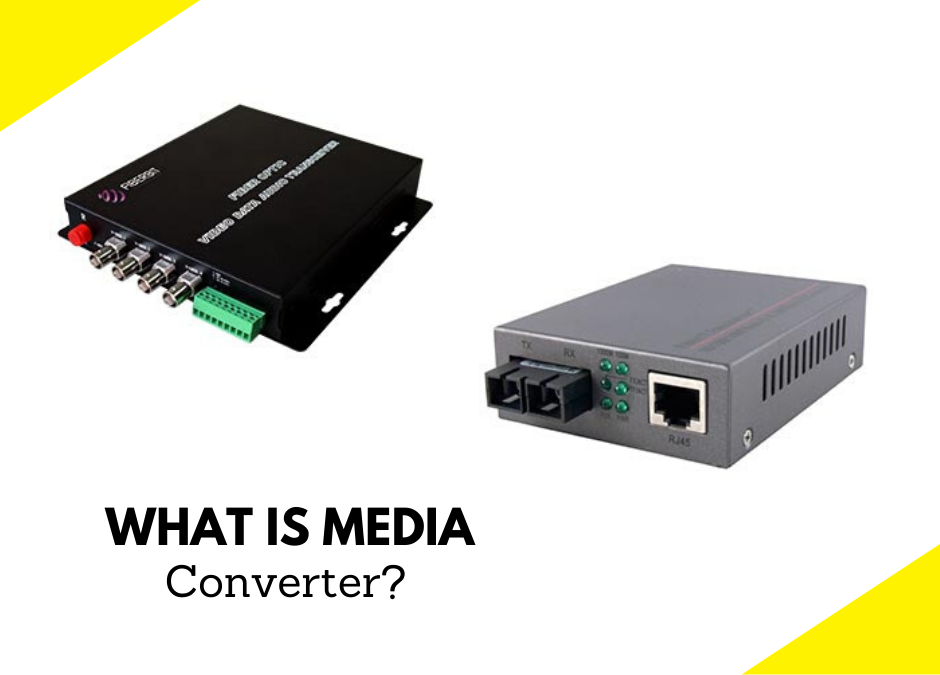
What is a Media Converter?
A media converter is a device used to connect media that otherwise would be incompatible. Media Converters is a type of networking device used for converting Ethernet or other communication protocols from one cable type to another.
Media converters are flexible and cost-effective devices for implementing fiber links in all types of networks. They are used to link fiber optic cables to twisted pairs for supporting ethernet-compatible devices. It can also be used to link networks collectively consisting of coax cable and single-mode to multimode fiber optic cable. They are used in pairs to insert a fiber segment into copper networks for increasing cabling distances and enhance immunity to electromagnetic interference.
Media converters are broadly used in MAN (Metropolitan Area Network) access and data transport services to enterprise customers for realizing copper-to-fiber or fiber-to-fiber connections. They can also be used as LAN’s (Local Area Networks)to convert link speeds and fiber modes.
Types of Media Converters
Media converters arrive in stand-alone as well as in modules. Let’s discuss the different types of media converters available.
Fiber-To-Fiber Media Converter
Fiber-to-fiber media converters have optical input port and optical output port therefore, both of its ends are connected with fiber. They provide connectivity between single-mode and multi-mode fiber as well as between dual and single fiber. Media converters are used for connecting different fiber-optic networks and support conversion from one wavelength to another.
Copper-To-Fiber Media Converter
Copper-to-fiber media converters are used to enable connections of copper-based Ethernet equipment over a fiber optic link. It has RJ 45 port for electrical signals and fiber port for optical signals. This conversion of data communication protocol extends links over greater distances with fiber optic cable and also protects data from noises and interference.
Power-over-Ethernet
Power-over-Ethernet (PoE) media converters provide reliable and cost-effective fiber distance extension to PoE-powered devices. PoE media converters are able to power devices like IP phones, video conferencing equipment, IP cameras, and Wi-Fi devices over copper UTP cabling.
Unmanaged vs Managed Media Converter
Unmanaged media converters are plug and play and make it easy to install and troubleshoot for newbies. Unmanaged media converters are good for small companies or campuses when simple use and management are needed.
Managed media converters with functions of networking, monitoring faults detection, and remote management enables network administrations to completely control data bandwidth and traffic. Managed media converters are more suitable for environments requiring medium-to-large scale deployment of media converters.
Benefits of Media Converters
Media converters can present solutions to problems like – Network complexity, demanding applications, and multiple devices to drive network speeds and bandwidth with higher and longer force-distance requirements within Local Area Networks. By allowing the use of fiber when it is required and integrating new equipment into existing cabling manufacture. Media converters support a wide variety of protocols and different types in Enterprise LAN networks. It supports a wide variety of protocols, data rates, and media types to create reliable and cost-effective networks.
Conclusion
Media converters are used in providing connections between fiber and copper. Today media converters are utilized in every industry and sector of the economy like healthcare, government, data centers, utilities, manufacturing, entertainment, transportation, etc.
We hope this blog was informative and provided enough information about media converter and its types. If you’re putting together a network and or need some help, feel free to contact us. For more information check our website http://www.santron.in/

